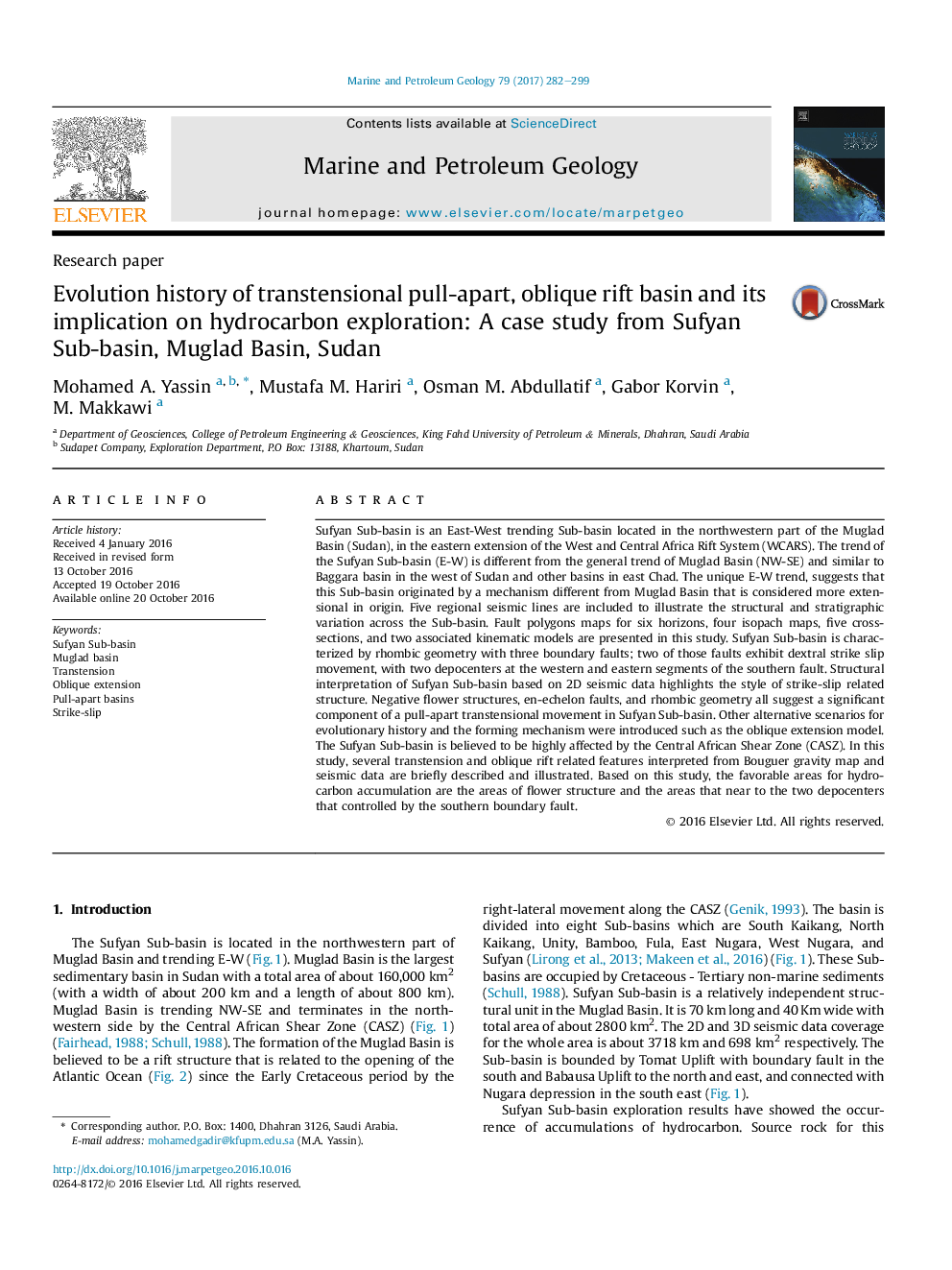| کد مقاله | کد نشریه | سال انتشار | مقاله انگلیسی | نسخه تمام متن |
|---|---|---|---|---|
| 6434321 | 1637148 | 2017 | 18 صفحه PDF | دانلود رایگان |
- Sufyan Sub-basin was mainly formed by dextral oblique shear movement and oblique extension.
- The Sub-basin type is pull-apart (rhombic graben).
- Highly prospective areas are the areas that near the two depocenters that controlled by the southern boundary fault.
Sufyan Sub-basin is an East-West trending Sub-basin located in the northwestern part of the Muglad Basin (Sudan), in the eastern extension of the West and Central Africa Rift System (WCARS). The trend of the Sufyan Sub-basin (E-W) is different from the general trend of Muglad Basin (NW-SE) and similar to Baggara basin in the west of Sudan and other basins in east Chad. The unique E-W trend, suggests that this Sub-basin originated by a mechanism different from Muglad Basin that is considered more extensional in origin. Five regional seismic lines are included to illustrate the structural and stratigraphic variation across the Sub-basin. Fault polygons maps for six horizons, four isopach maps, five cross-sections, and two associated kinematic models are presented in this study. Sufyan Sub-basin is characterized by rhombic geometry with three boundary faults; two of those faults exhibit dextral strike slip movement, with two depocenters at the western and eastern segments of the southern fault. Structural interpretation of Sufyan Sub-basin based on 2D seismic data highlights the style of strike-slip related structure. Negative flower structures, en-echelon faults, and rhombic geometry all suggest a significant component of a pull-apart transtensional movement in Sufyan Sub-basin. Other alternative scenarios for evolutionary history and the forming mechanism were introduced such as the oblique extension model. The Sufyan Sub-basin is believed to be highly affected by the Central African Shear Zone (CASZ). In this study, several transtension and oblique rift related features interpreted from Bouguer gravity map and seismic data are briefly described and illustrated. Based on this study, the favorable areas for hydrocarbon accumulation are the areas of flower structure and the areas that near to the two depocenters that controlled by the southern boundary fault.
Journal: Marine and Petroleum Geology - Volume 79, January 2017, Pages 282-299
